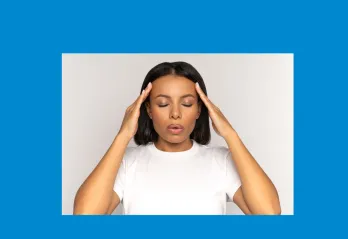April Mental Health Article

April is Stress Awareness Month, a time to reflect on how stress impacts our lives and what we can do to manage it. Stress is something we all experience, whether from work, relationships, or daily responsibilities. It manifests in our bodies as emotional or physical tension, often causing frustration, anxiety, or nervousness. In small doses, stress can be beneficial, helping us stay alert and meet challenges. However, chronic stress can take a toll on our health, leading to problems like high blood pressure, weakened immune function, and difficulty sleeping.
One effective and accessible way to combat stress is through mindful breathing. Our breath is directly connected to our nervous system, influencing how we react to stressors. By practicing intentional breathing techniques, we can shift from a state of fight-or-flight to one of relaxation and restoration.
Breath work involves the conscious manipulation of breathing patterns to regulate the body’s physiological responses. Some key benefits include:
- Enhanced relaxation – Deep breathing triggers a relaxation response, helping to calm the mind and body.
- Reduced anxiety – Slow, controlled breaths can lower stress hormone levels, promoting a sense of calm.
- Improved sleep – Mindful breathing before bed can prepare the body for restful sleep.
- Better circulation – Breathing exercises improve blood flow by relaxing blood vessels and increasing nitric oxide production, which enhances oxygen delivery.
- Support for the autonomic nervous system – Breath control helps regulate the balance between the sympathetic (fight-or-flight) and parasympathetic (rest-and-digest) systems.
Breath work also plays a role in neuroplasticity, the brain’s ability to rewire and adapt. By practicing controlled breathing, we can train our brains to respond to stress more calmly, improving focus, creativity, and problem-solving skills over time.
An interesting aspect of breath control is how the inhale and exhale affect the body differently. Inhaling is linked to the fight-or-flight response, while exhaling activates the parasympathetic nervous system, signaling safety to the brain. A useful breathing technique is the 1:2 ratio, where the exhale is twice as long as the inhale, promoting relaxation and even supporting fat metabolism.
Stress is inevitable, but how we respond to it is within our control. By incorporating mindful breathing into our daily routine, we can develop a powerful tool for managing stress, improving overall health, and fostering mental clarity. Take a deep breath—relief is just one inhale (and exhale) away.
RESOURCES TO CHECK OUT THIS MONTH:
- Resilience Skill Sheet: Take a Breath
- Y360 Video: 5 Ways to Take a Break
- Family Engagement and Mental Health Pop-Up Event: Stress Creatures
- April 14th 3:30-5pm at Dahl Lobby
- April 16th 3:30-5pm at Houser Lobby